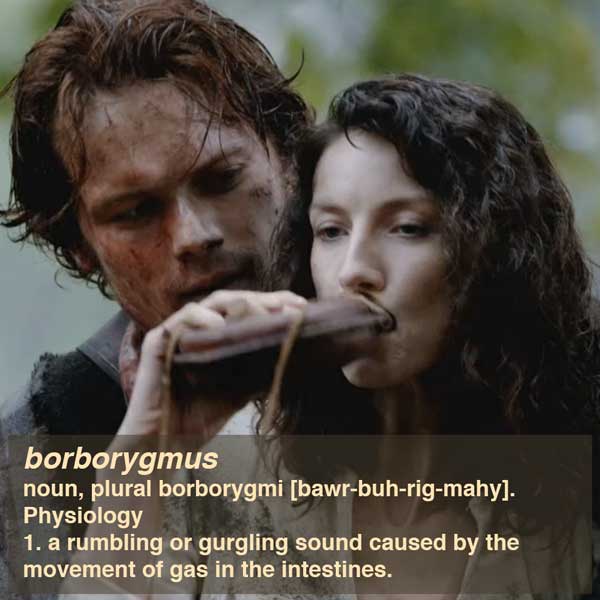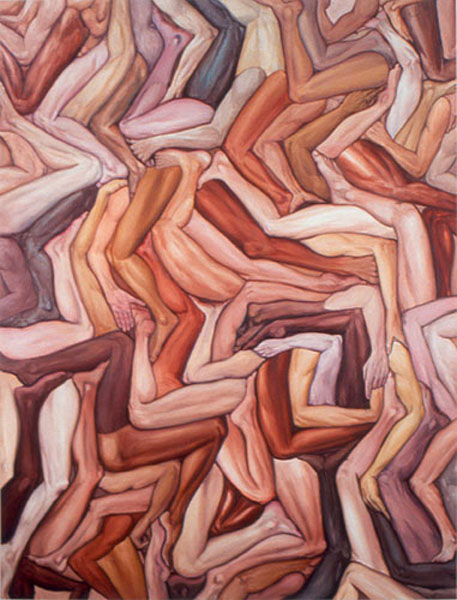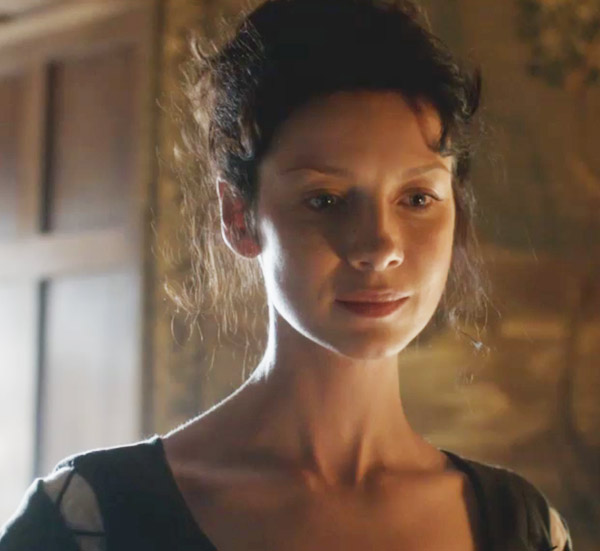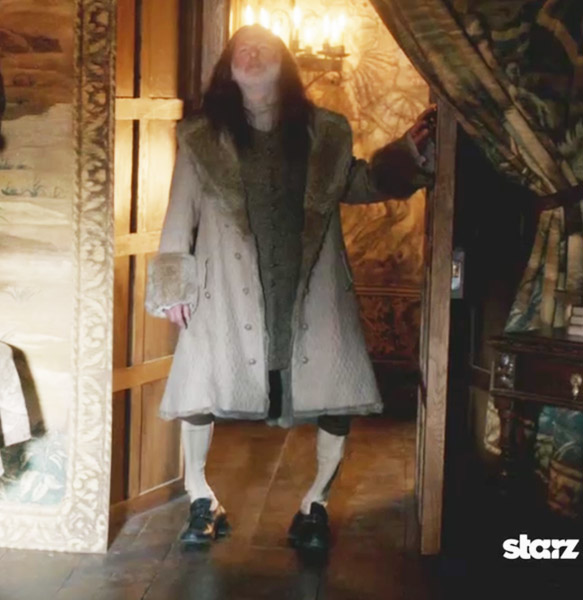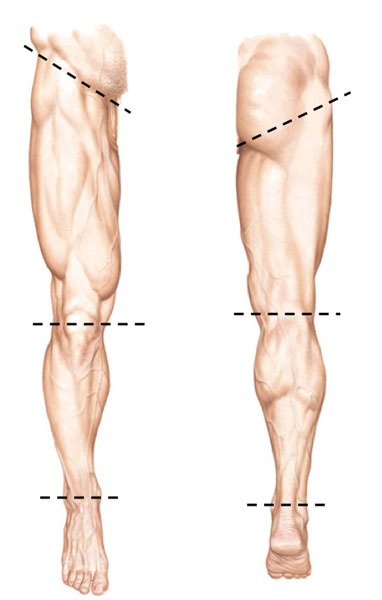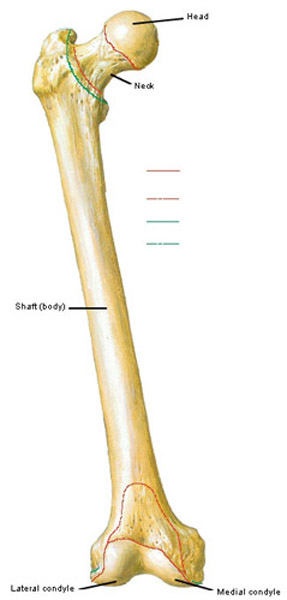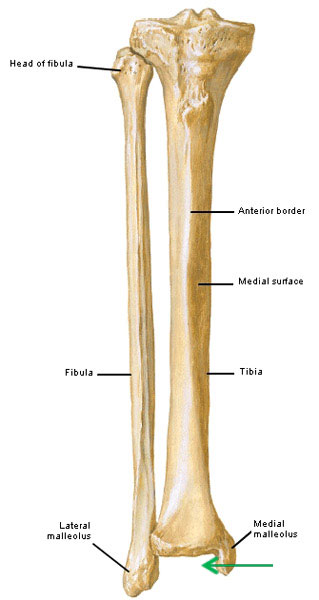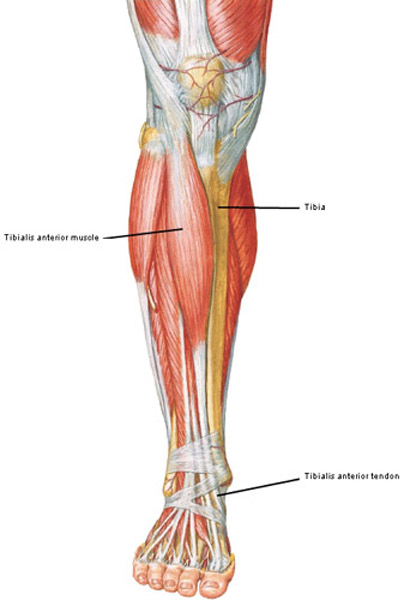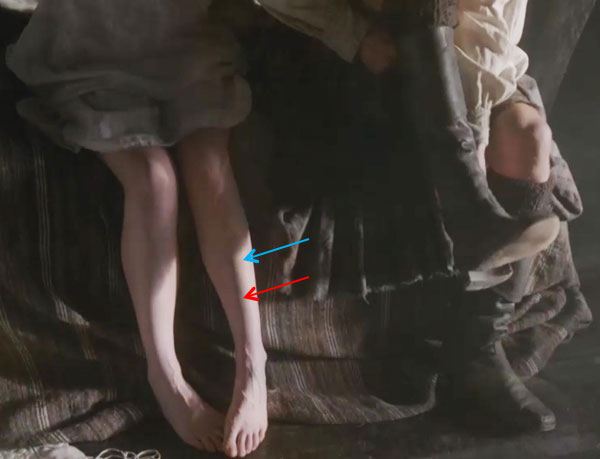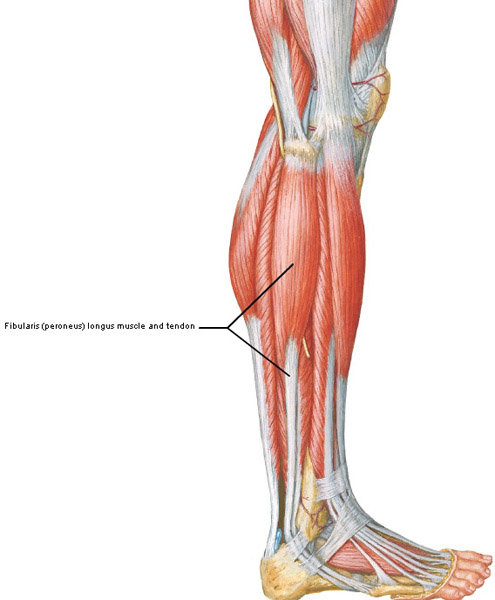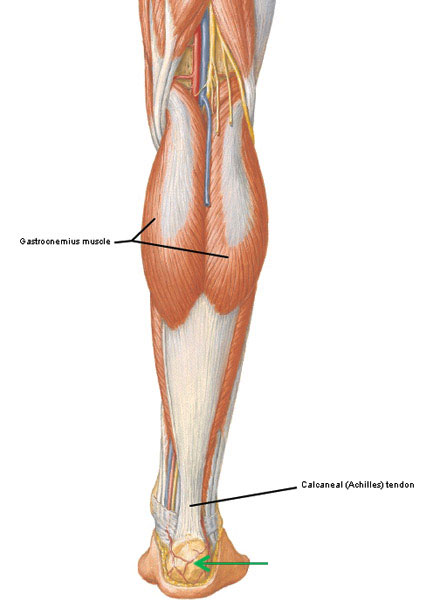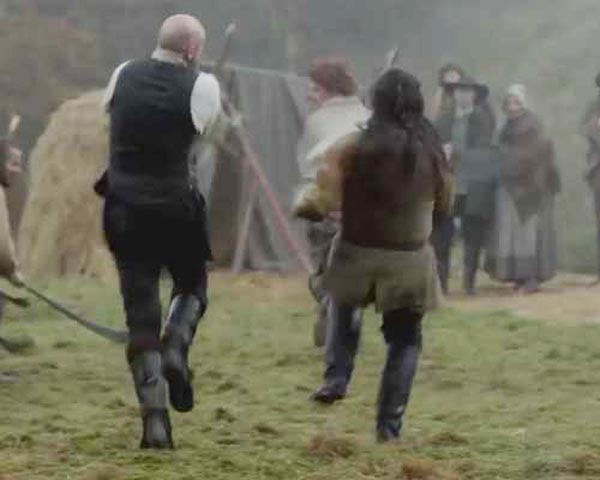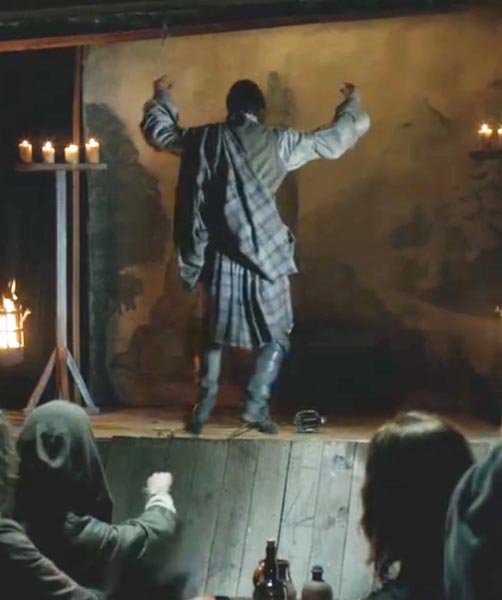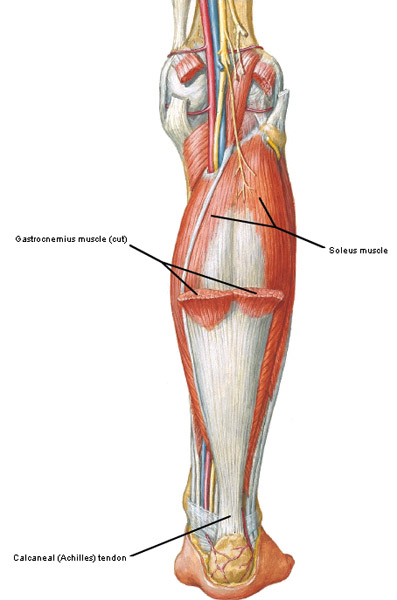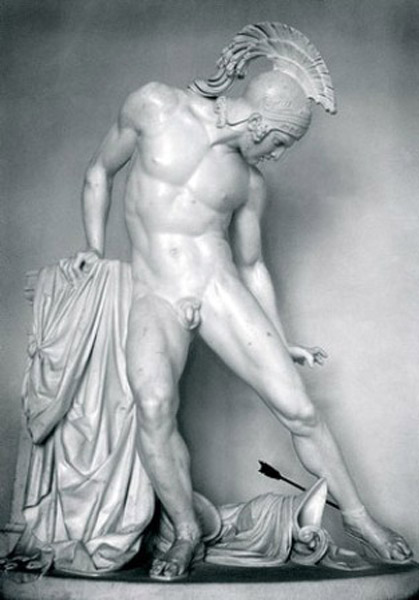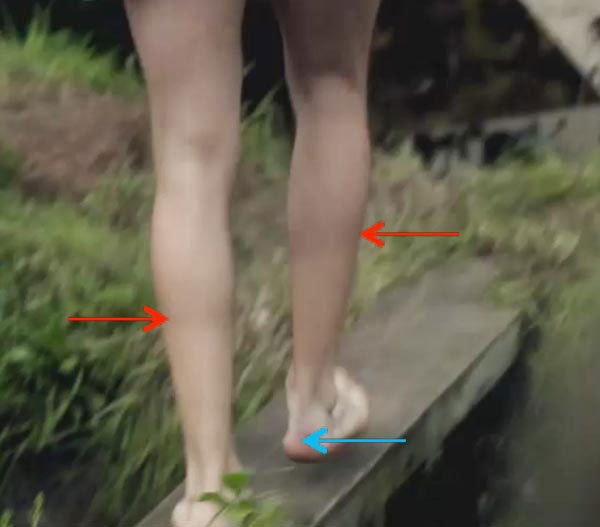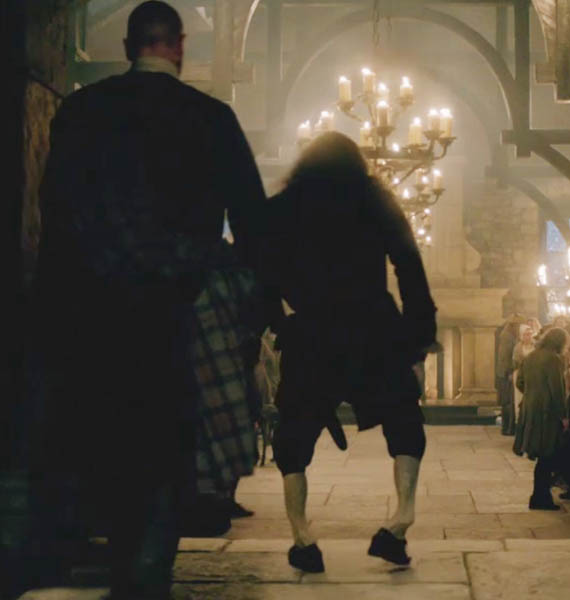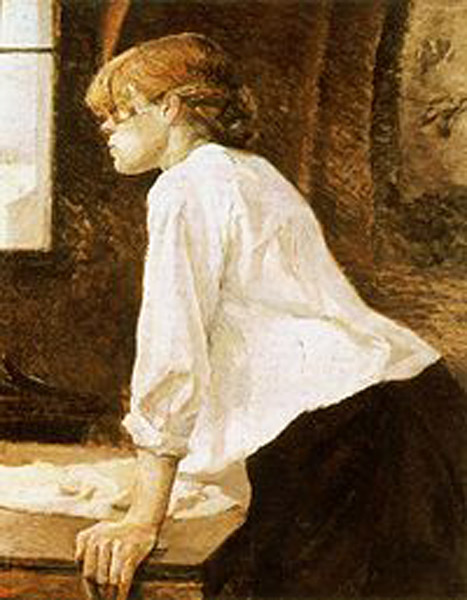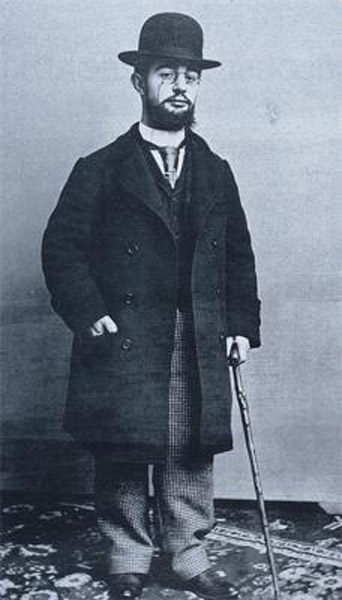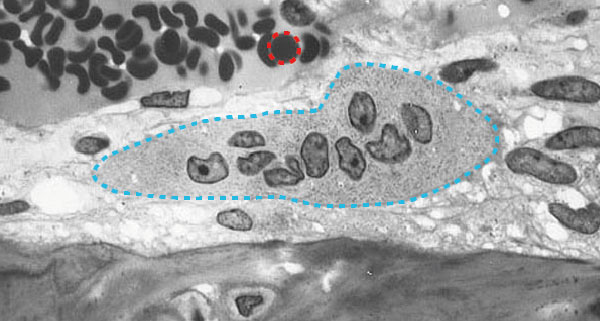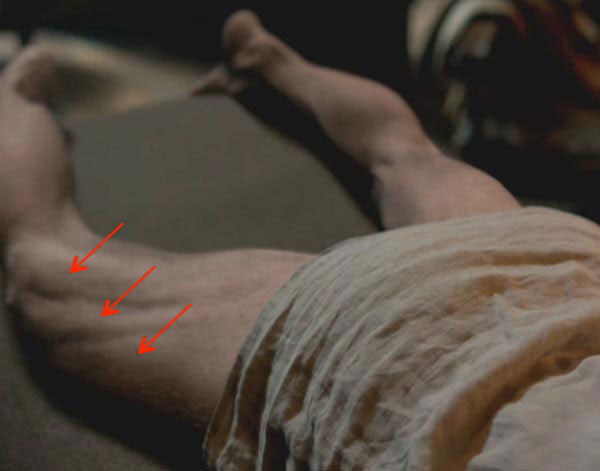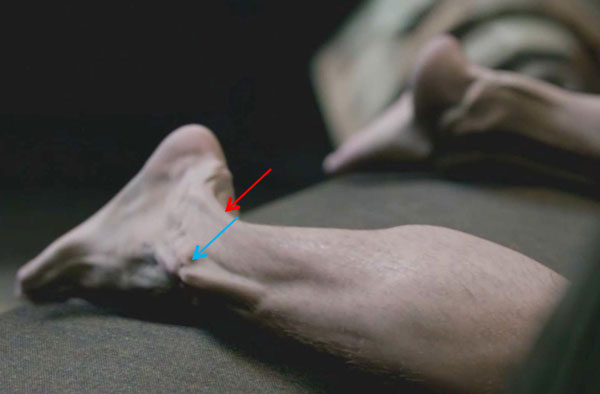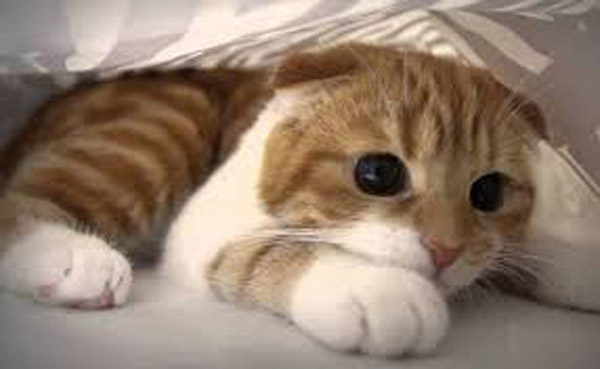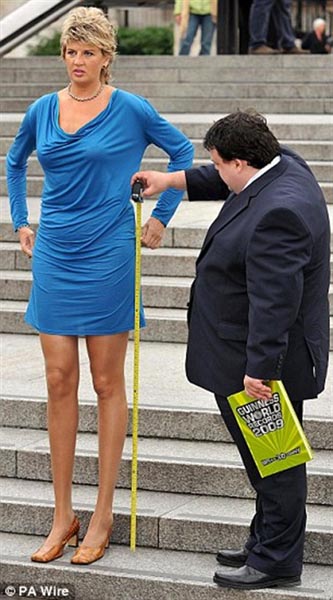Welcome, students to Anatomy Lesson #28 – The Nose! Oh, you don’t think the nose sounds very interesting? Well, please read on because this lesson contains surprising, startling and shocking info about the human proboscis.
Is the nose important to society? You bet! There is a mess of English idioms about the nose including: as plain as the nose on your face, nose to the grind stone, turn nose up, brown nose, follow one’s nose, cut one’s nose off to spite one’s face, count noses, nose for gossip, win by a nose, keep nose out of business, no skin off one’s nose, nose about, nose to the ground, look down one’s nose at, nose around, and nose-to-nose. Clearly, the nose is a clever conduit to convey important social messages.
Oh, and let us not forget the nose-out-of-joint idiom! Claire and Jamie are clearly in that realm going at it “Down by the Riverside.” Pretty simple really: Jamie expects an apology and Claire isna giving one (Starz episode 109, The Reckoning)! He told her to STAY PUT but she doesna have to do what he says! She’s his wife and she doesna like that one bit! Whew, their passionate noses are fully engaged in this battle of wills!
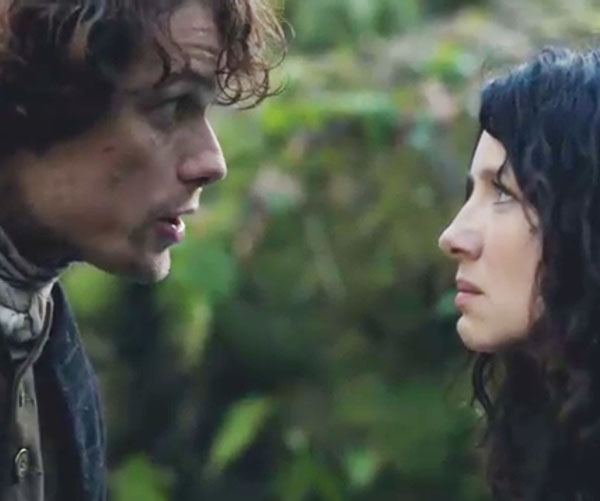
Those who read Diana’s books know that Claire is endowed with a very keen sniffer. Her nose catalogues a staggering array of smells including but certainly not limited to: alcohol, bat guano, bitter almonds, blood, clover, feces, grass, herbs, honey, hops, ink, laundry starch, opium, pickled herring, pine needles, pine tar, pitch, pus, raw sewage, resin, road dust, seasickness, soap, sulfur, wine, wood smoke, yeast and last but not least, male sweat! Jamie, Himself offers a fine flattering appraisal of Claire’s nose (Voyager book)!
“’You smell of ink.’” He smiled slightly, stepping back and running his hand through his hair. ‘You’ve a nose as keen as a truffle pig’s, Sassenach.’ ‘Why thank you, what a graceful compliment,’ I said.
At the base of Craigh na Dun we see more proof of her superb sniffing skills. Claire’s knowing nose encounters Frank dressed in 18th century soldier garb (Starz episode 101, Sassenach). Oops, it isn’t Frank, but his six-time great grand paternoster: Jonathan Randall, Esquire, Captain of his Majesty’s Eighth Goons, er, Dragoons! Ugh, he’s too close for comfort as Claire analyzes his personal plethora of peculiar odors:
“My captor, whoever he was, seemed not much taller than I…. I smelled a faint flowery scent, as of lavender water, and something more spicy, mingled with the sharper reek of male perspiration.”
His miasma of lavender and male sweat doesna appeal to Mistress Claire; her nose knows a real stinker when it sniffs one. But, dinna despair lassie, a braw and bonny laddie is coming your way pronto! Ye will like the whiff of him. No problema!
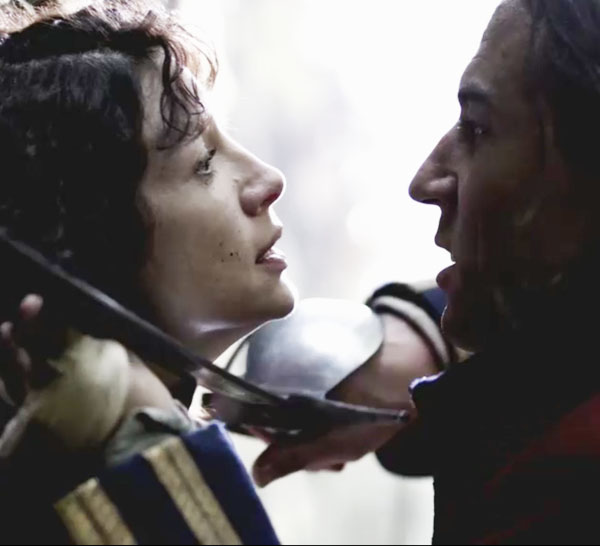
Anatomy of the human nose is fascinating so let’s get started! Nose and chin are typically the most projecting parts of the face. In anatomy, the nose is divided into external nose, the visible projecting part, and internal nose, the part deep to the surface. In anatomy, the nose belongs to the respiratory system because it serves as a passageway for air flow during respiration: nitrogen, oxygen, carbon dioxide, and argon, along with trace elements and other particles move through the nose on their way into and out of the lungs.
The external nose has a root that is continuous with the forehead (Photo A – red arrow). The tip of the nose is its apex. The paired nostrils are the nares. The bridge is formed of bone and cartilage and the alae (pl. – Latin meaning wings) are the nasal flaps. Nasal skin is typically thin (Anatomy Lesson #5 and Anatomy Lesson #6) and adheres tightly over the alae but elsewhere is quite moveable.
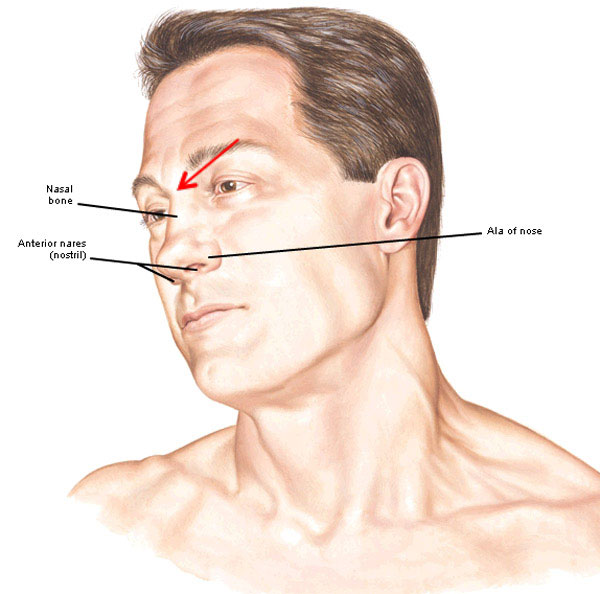 Photo A
Photo A
The skeleton of the external nose is composed of bone, cartilage and fibro-fatty tissue that mimics the external shape. The bridge includes a pair of small nasal bones (Photo B) that form non-movable joints between themselves and with frontal (forehead) bone and nasal cartilages. Nasal cartilages include a septal cartilage most of which is internal and alar cartilages that form sides and tip of the nose as well as much of the nares. Finally, the nasal flaps are made of fibro-fatty tissue – mostly collagen fibers interspersed with fat cells. There are some small accessory nasal cartilages also, but we won’t concern ourselves with these.
Try this: Grip the upper bridge of your nose and wiggle your fingers. Normally, it won’t budge because the nasal bones are firmly-anchored. Slide fingers toward the apex and wiggle it; this part moves easily because it is formed of flexible cartilage. Now, find the juncture between hard and flexible areas; this is where nasal bones meet nasal cartilages.
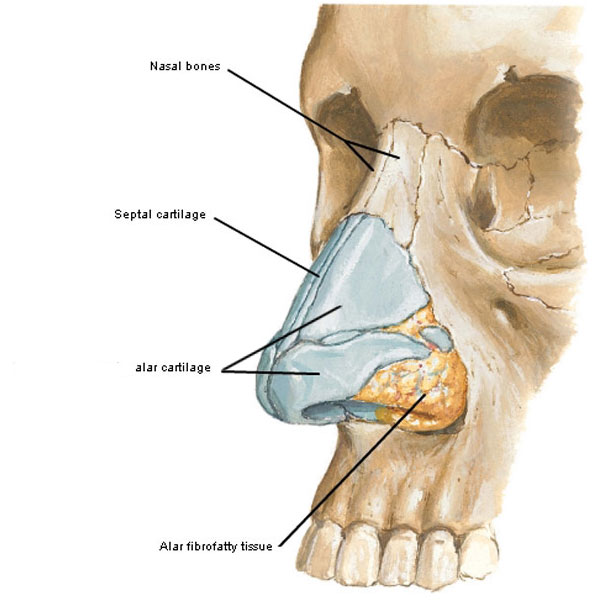
Photo B
Clinical Correlation #1: ever seen a broken nose? Not a pretty sight. One may look a bit like wee, wild Willie’s nose after the tavern brawl (Starz episode 5, Rent). It was his first time on the road, but being a true Highlander, the lad held his own. The bloody jagged line across the bridge of his nose lies near the juncture between nasal bones and cartilages, a common site to suffer a broken nose.
As you might imagine, nasal fractures range from mild to severe and symptoms include: pain and swelling that persists after 3 days, crooked nose, difficulty breathing through the nose even after swelling decreases, fever and recurrent nosebleeds. If clear fluid starts leaking from an injured nose, get to an emergency room pronto as this could be CSF (cerebrospinal fluid)!
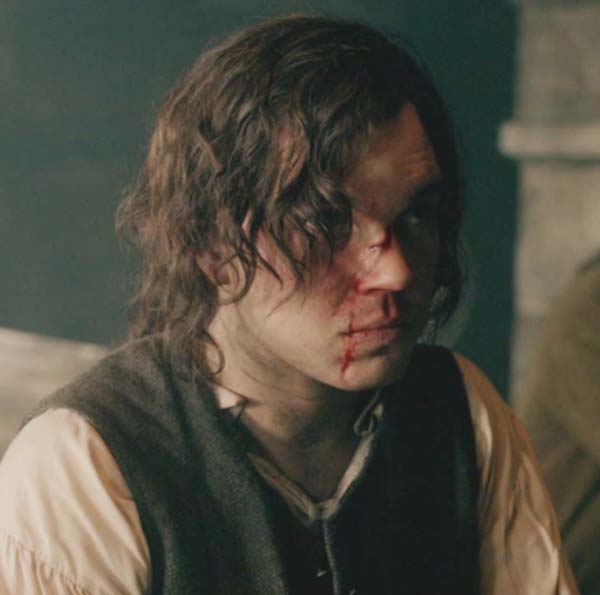
The external nose also has two muscles (Photo C): nasalis (Latin meaning pertaining to the nose) and depressor septi nasi (Latin meaning pull down nasal septum). The alar part of nasalis lifts and flares the nasal alae to open the nares. A transverse part of nasalis compresses the alae to close the nares. Depressor septi nasi aid the transverse nasalis muscles by drawing down the septum.
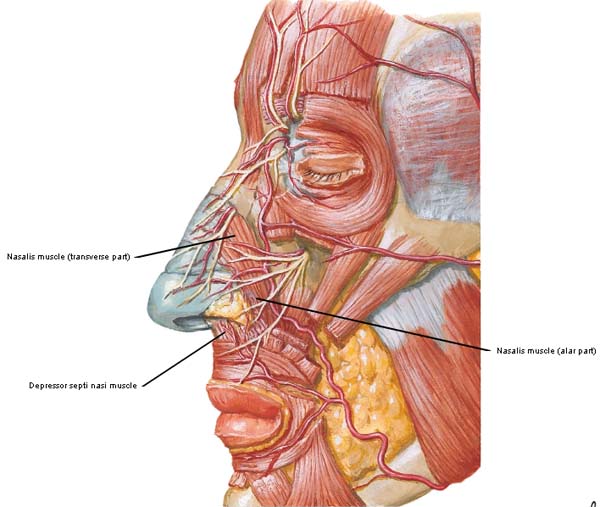
Photo C
Do we see examples of the nasalis muscles at work in Starz episodes? Aye we do! Jamie’s grand, garrulous (ha) godfather offers a terrific example for our viewing pleasure. Here, dour Murtagh glares at Claire as they scour Scotland for their beloved Lallybroch Laird (Starz episode 114, The Search)! It’s easy to tell if the nasalia (pl.) muscles are contracted because the alae flare deepening the furrow between them and the sides of the nose.
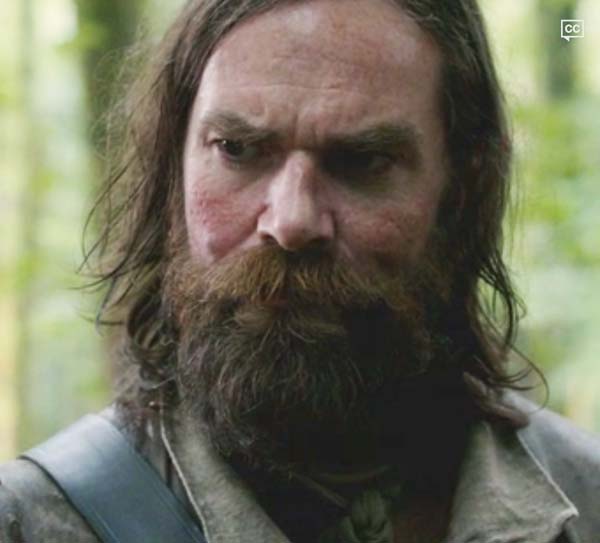
The internal nose consists of two slit-like nasal cavities separated by a midline nasal septum. Nasal cavities begin at the nares as right and left vestibules, each lined with thin skin and coarse hairs that trap unwanted particles (Photo D – left septum). The nasal cavities extend posteriorly ending at the choanae, a pair of openings on either side of the septum that are continuous with the nasopharynx or back of the throat (Photo D).
Each nasal cavity has floor, roof, septal wall and lateral wall. The floor is made of bony palate that separates nasal and oral cavities (Photo D – blue arrow). The septal wall or nasal septum is flat, smooth and divides the paired nasal cavities (Photo D – left side of nasal septum). A whopping seven cranial bones plus the septal cartilage form the nasal septum but these will not be covered in this lesson. When we are young, the septum is typically straight but trauma, disease or age can create a deviated septum, a condition which may interfere with air flow on the narrowed side.
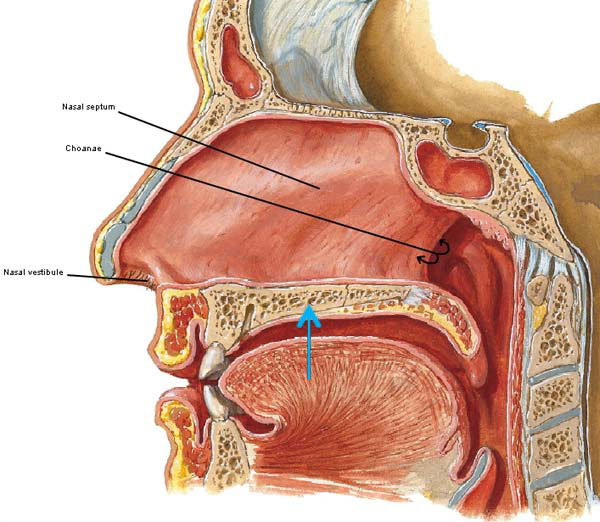
Photo D
Unlike the septal walls, the lateral walls are complex; each is convoluted into three chonchae or turbinates that project like drooping shelves into their respective nasal cavity (Photo E). Humans also have four sets of paranasal sinuses with openings that drain into the lateral walls but these will be covered in a later lesson. The roof of each nasal cavity is described below.
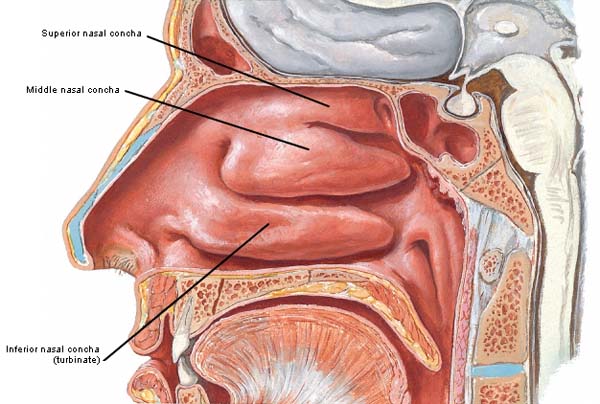
Photo E
Excepting the vestibule, all surfaces of the nasal cavities are covered with mucous membrane (red surfaces in Photos D and E) so named because all cells of the surface layer are living as opposed to skin wherein the topmost cells are dead. The mucous membrane of floor and septal and lateral walls include a surface layer called respiratory epithelium. Deep to the nasal respiratory epithelium are glands which release mucus and watery fluids forming a surface coat that hydrates and moistens the entire mucous membrane (Note: mucous is adj. form and mucus is a noun – these are not misspellings).
Nasal respiratory epithelium includes six types of cells but we will cover only the ciliated cell because it is really special. Photo F isn’t an image of heather covering a Scottish Munro; it is a scanning electron micrograph (SEM) of nasal respiratory epithelium. We have seen SEM images before in skin (# 5 and #6) and inner ear (#25) anatomy lessons. SEM micrographs are 3-D images showing highly magnified surface details. Thus, in Photo F, the pinkish shag carpet is actually cilia, motile “hairs” projecting from the surfaces of ciliated cells. Cilia of the front of the nasal cavities beat toward the nares to kick out mucus and unwanted debris; cilia toward the back of the nasal cavities beat toward the pharynx where debris and mucus can be swallowed or coughed out. Cool, huh?
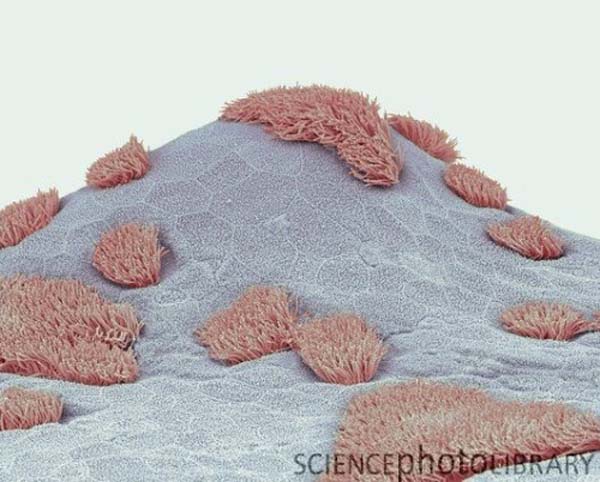
Photo F | Photo credit: Steve Gschmeissner
Now, let’s return to the scroll-like lateral walls of the nasal cavities. Why the complex shape? First, the shelves increase surface area of mucous membrane to help warm and humidify inspired air before it reaches the delicate lungs (Photo G). Second, air is tumbled as it flows over the chonchae trapping air-borne particles in the mucous film so cilia can move this stuff toward the nares or the pharynx. An ingenious design indeed!
Clinical Correlation #2: Cigarette smoking (are you weary of this topic?) causes respiratory epithelium to be replaced with a more durable type such as lines the mouth. Unfortunately, the replacement epithelium lacks cilia so particles and mucus cannot be properly removed. Further, these changes are not limited to nasal respiratory epithelium but occur throughout the airways even into the lungs and are the basis for smoker’s cough. And, in case you are wondering, yes, routine marijuana smoking causes similar changes to respiratory epithelium. As for e-cigarettes, the jury is still out on this practice because it is new. However, early results indicate that it is also deleterious to respiratory epithelium. Don’t mean to preach… just sayin’! It’s my job, ye ken?
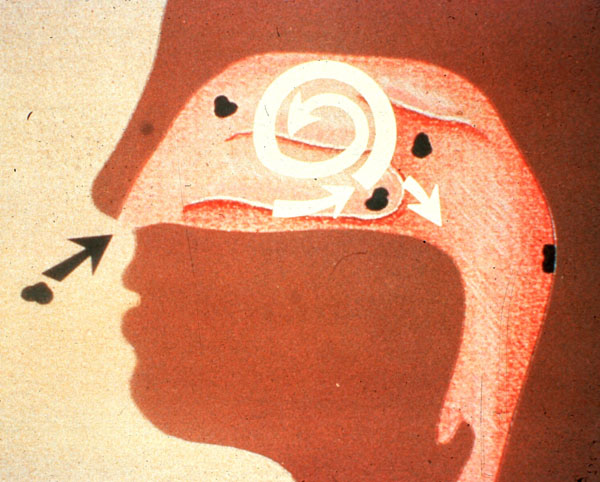
Photo G
Now, a moment for something truly fascinating: deep in the nasal mucous membranes are structures known as swell bodies. It’s true! Would I lie to you? Here’s what they look like. Och, sorry students, wrong image! These are swell bodies but not the swell bodies of nasal mucous membrane (Starz, episode 107, The Wedding)!
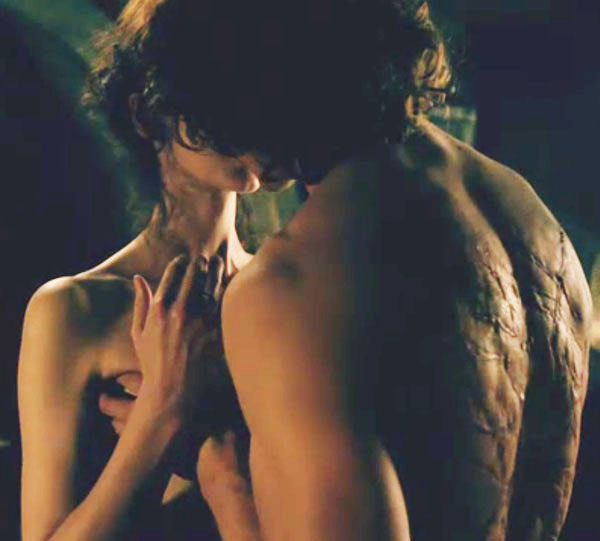
Lost me train of thought…Oh, there it is! The mucous membranes of both nasal cavities contain an extensive plexus of vessels labelled “network of veins” in Photo H, a LM (light micrograph) taken of a thin section of nasal mucous membrane after staining with pink and blue dyes.
This extensive plexus of veins constitutes swell bodies of nasal mucosa (in each nasal cavity), a type of erectile tissue like that of male and female phalli (pl.). During sexual arousal, the venous spaces of the phallus fill with blood causing the organ to become turgid and erect. Well, something very similar occurs to the swell bodies of the nasal cavities. YES, it does! Regulated by the brain (hypothalamus), the swell bodies of one nasal cavity fill with blood while those of the opposing side drain. Known as the nasal cycle, every so often the sides flip such that swell bodies of the opposing side engorge with blood while the former full side empties. How long is the interval? Well, it varies from about 30 minutes to a few hours. Normally, we are unaware of the nasal cycle because overall airflow remains constant. Why do we have a nasal cycle? Well, air flow is reduced through the engorged side allowing it to rest and rehydrate. Then the sides flip so the other nasal cavity can recuperate. Isn’t this wondrous? It boggles the mind!
Try this: Slowly inhale and exhale. Can you feel air moving more freely through one nasal cavity? This is the side with empty swell bodies whereas swell bodies are filled with blood on the closed side. Wait an hour or so and see if the sides flip. Note: if you have a deviated septum, active allergies or a cold this phenomenon will be difficult to demonstrate.
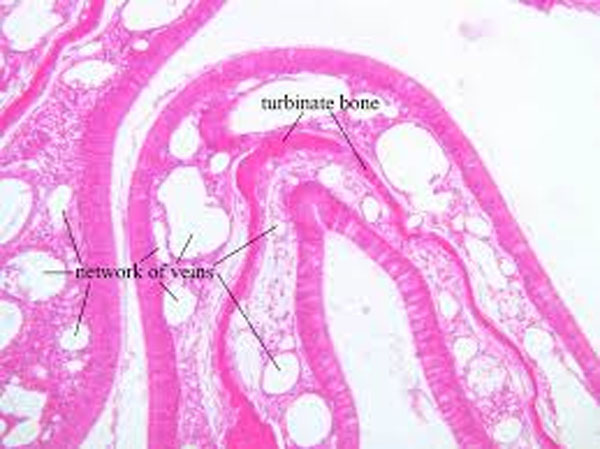
Photo H
Lastly, we must consider the roof of the nasal cavities. The roof is endowed not with respiratory epithelium but with olfactory epithelium (Photo I – blue area). Taste buds of the oral cavity detect five distinct qualities of taste, but our noses distinguish hundreds of substances even in minute quantities. Being more diversified, olfaction (smell) also aids our sense of taste. And to further refine the issue, we detect odors during inhalation but the taste boost occurs during exhalation.
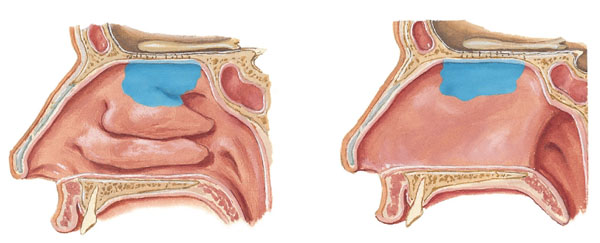
Photo I
Olfactory epithelium is composed of numerous olfactory neurons (nerve cells) which collectively form the olfactory nerve or Cranial Nerve I (Photo J). Airborne molecules bind to the surface of the olfactory neurons causing them to depolarize. This electrical response travels along the olfactory bulb (Photo J) before distributing to olfactory areas of the brain where smell is perceived and interpreted.
Lastly you should know that our ability to detect odors decreases with age, a change usually more pronounced in men than in women. People often do not recognize the loss unless they also experience a decreased sense of taste.
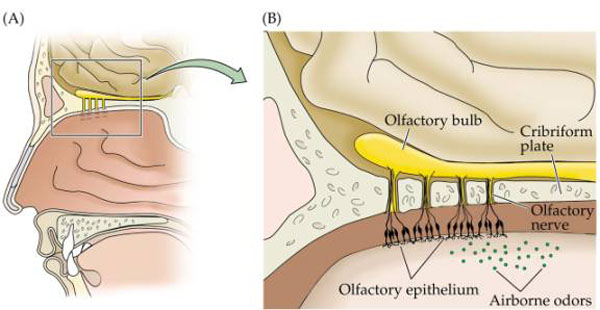
Photo J
Clinical Correlation #3: Neurons are terminal cells meaning early in life they cease to divide and proliferate. Olfactory epithelium is exceptional because these neurons retain the amazing ability to divide and replace themselves throughout life.
You all ken that major spinal cord injuries do not repair because surviving neurons cannot divide to replace damaged or dead neurons. Well, recently, Polish doctors transplanted olfactory neurons (his own) into the spinal cord of a man paralyzed from the chest down in the world’s first attempt to reverse paralysis using this technique. The hope is that olfactory neurons transplanted to the spinal cord will proliferate, connect with and stimulate his paralyzed muscles. You can follow his progress at Spinal Cord Injury Zone. Let’s send him and his health care team our best wishes for success!
Now, for more fun stuff: let’s peruse Starz images and book quotes for more about splendid noses; there are many!
After being whacked on the heid by Murtagh’s dirk, Claire awakens astride a horse and immediately analyzes his fine fecund funk (Starz episode 101, Outlander):
“I knew it wasn’t a dream. My erstwhile savoir fairly reeked of odors too foul for any dream I might conjure up.”
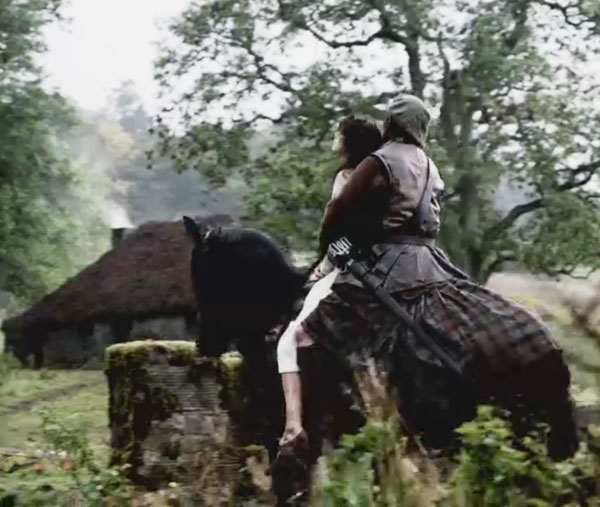
Claire meets Jamie in a stone cottage and a whole lot of “playing doctor” ensues enabling Jamie to erm, mount a steed. Snort! Dougal jerks puir Claire around and then hoists her up on Jamie’s horsie (Starz episode 101, Sassenach and Outlander book)!
“With a slight grunt, he boosted me into the saddle in front of Jamie, who gathered me in closely with his good arm… He smelt strongly of woodsmoke, blood, and unwashed male, but the night chill bit through my thin dress and I was happy enough to lean back against him.”
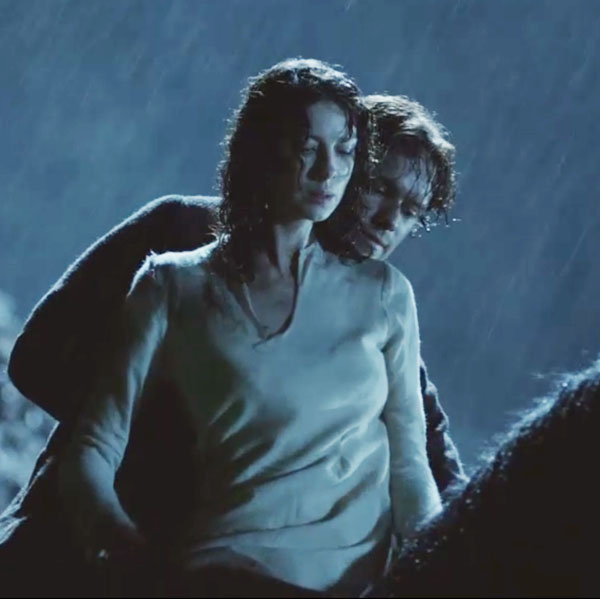
Next, Claire uses her knowing nose after Dougal and his merry men lay waste to a raft of redcoats at Cocknamon Rock (Starz, episode 101, Sassenach and Outlander book).
“Someone passed a flask to Jamie, and I could smell the hot, burnt-smelling liquor as he drank. I wasn’t at all thirsty, but the faint scent of honey reminded me that I was starving…”
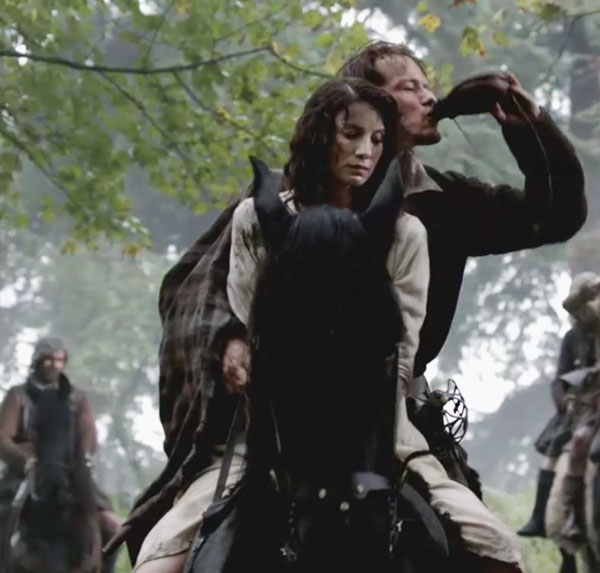
Fast forward to swell bodies! Going nose-to-nose with her young gallant on their wedding night, Claire considers Jamie’s splendid nose (Starz episode 107, The Wedding)! Herself writes in Outlander book:
“’My mother was a MacKenzie, though. Ye’ll know that Dougal and Colum are my uncles?’ I nodded. The resemblance was clear enough, despite the difference in coloring. The broad cheekbones and long, straight, knife-edged nose were plainly a MacKenzie inheritance.
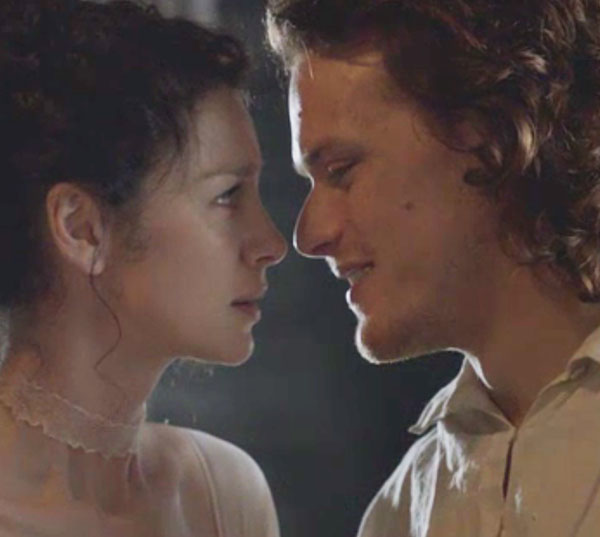
Now, here’s Jamie’s 18th century colorful counsel about sharing one’s armpit aura with another creature (Starz episode 107, The Wedding and Outlander book):
“He raised one arm, displaying a soft tuft of cinnamon-colored hair. ‘You rub your oxter over the beast’s nose a few times, to give him your scent and get him accustomed to you, so he won’t be nervous of ye.’ …’That’s what you should have done wi’ me, Sassenach’….’Then I wouldn’t have been skittish.’”
Snort!
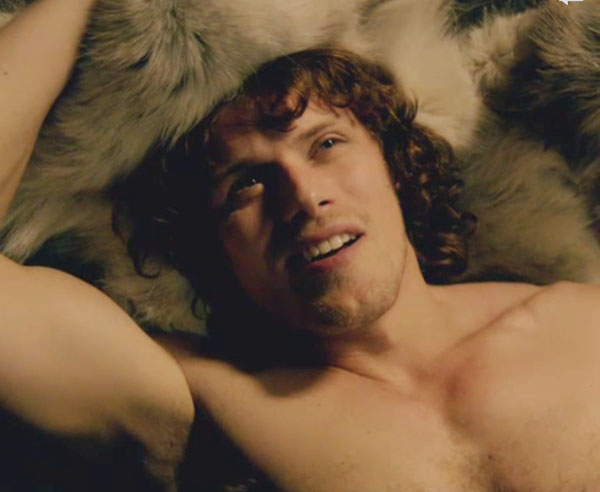
A skittish Scottish Scot? Har, har! Ready for something truly amazing! Experiments show that mice chose genetically diverse mates based on smell. Fine and dandy, but what about humans? Have you heard of the “sweaty T-shirt” experiment? In 1995, a Swiss zoologist devised an experiment to determine if women prefer the odor of some men over others. Male volunteers wore clean T-shirts and female volunteers blindly smelled shirt odor to evaluate it for intensity, pleasantness and sexiness. Overall, the women preferred the smell of men whose MHC genes differed from their own. Whaaat? What is MHC? MCH (major histocompatibility complex) genes generate molecules that enable our immune system to recognize and destroy invaders; the more diverse the parental MHC genes the stronger the immune system of their offspring, an advantage in destroying pathogens. The study results suggest that evolution has provided humans with a transmitter (odor/pheromone) and receiver (olfactory epithelium) of genetic information that could influence mate choice. Wow!
Now, you might think Claire is just resting her face against Jamie’s back to recuperate after hiking around this braw Scottish mountain (Starz episode 107, The Wedding)! But, she was clearly sniffing to detect his MHC. Her nose knows he is the King of Men! Yup, he’s a keeper! Herself explains (Outlander book):
“His pleasant musky smell mingled with the harsh scent of linen. “Take off your shirt,” I said … He smelled faintly of soap and wine…”
And he did! Take off his shirt, I mean. Yerp!
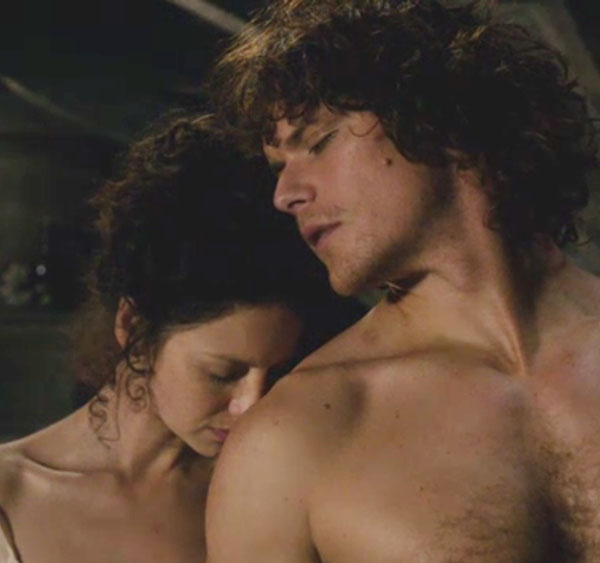
Hey, hey, come back! In summary, the external nose adds contour and expression to our faces while the internal nose cleanses and humidifies the air we breathe as well as provides us with the ability to smell a broad and fascinating array of molecules. Do you appreciate your sniffer? Is it as keen as Claire’s? Let’s be grateful to the sense of olfaction for the richness and joy it adds to our lives!
Be Glad Your Nose is on Your Face
Jack Prelutsky, 1940
Be glad your nose is on your face,
not pasted on some other place,
for if it were where it is not,
you might dislike your nose a lot.
Imagine if your precious nose
were sandwiched in between your toes,
that clearly would not be a treat,
for you’d be forced to smell your feet.
Your nose would be a source of dread
were it attached atop your head,
it soon would drive you to despair,
forever tickled by your hair.
Within your ear, your nose would be
an absolute catastrophe,
for when you were obliged to sneeze,
your brain would rattle from the breeze.
Your nose, instead, through thick and thin,
remains between your eyes and chin,
not pasted on some other place–
be glad your nose is on your face!
A Deeply Grateful,
Outlander Anatomist
photo creds: Netter’s Atlas of Human Anatomy, 4th ed., Sony Pictures, Starz, www.rci.rutgers.edu (schematic of olfactory epithelium), www.sciencephotolibrary.tumblr.com (SEM of respiratory epithelium)

